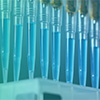What Is Buffer Management
The Role of Buffer Management in BiopharmaBuffer management is important for successful production in biopharmaceutical manufacturing. Buffers help maintain the right pH and stability for the process. They are vital at different production stages, and their careful handling and use are essential for consistent and dependable results. Biopharmaceutical manufacturing encompasses a range of processes, from cell culture to protein purification. Each step requires careful attention to buffer selection, preparation and utilization to ensure optimal conditions for reactions and biomolecular interactions. Proper buffer management minimizes the risk of experimental variability and supports the consistent production of high-quality biopharmaceutical products. What is buffer management?Buffer management is carefully handling and controlling buffer solutions within various contexts, particularly in manufacturing processes and laboratory research. Buffers are aqueous solutions containing a weak acid and its conjugate base that resist changes in pH when acids or bases are added. In manufacturing, buffer management ensures consistent pH levels and stability during processes, which helps prevent adverse effects on product quality and performance. Buffers also play an important role in laboratory research, maintaining optimal reaction conditions and enhancing the reliability of experimental outcomes. Importance of buffer management in laboratory researchThe significance of buffer solutions cannot be overstated in industrial production. They play an important role in upholding stable and controlled environments, ensuring ideal conditions for various chemical and biochemical reactions. These buffers act as a protective measure against fluctuations in pH and ionic strength and help safeguard the efficiency and quality of manufacturing processes. Precise pH control is especially critical in pharmaceuticals, food and beverage, and biotechnology industries, where even slight deviations can impact product yields, chemical reactions and overall product quality. The careful management of buffers in production processes enhances the reliability and reproducibility of manufacturing and contributes to the consistent production of high-quality goods. Furthermore, buffer systems play a vital role in mitigating the effects of impurities and contaminants, providing an extra layer of stability to the production environment. By implementing robust buffer management strategies, industrial processes can achieve heightened precision, efficiency and reproducibility. This helps produce dependable and high-performance materials across a range of sectors. Buffer types and selectionSelecting the right buffer type is essential, as it directly impacts maintaining stable pH conditions, which is important for properly functioning biological, chemical and biochemical processes. The choice of buffer can significantly influence the accuracy and success of experiments, making it imperative to carefully match the buffer’s properties with the specific requirements of the application at hand. Phosphate buffers are vital in biological and enzymatic processes, while Tris buffers find utility in protein analysis and electrophoresis. HEPES buffers are essential for maintaining pH stability in cell culture and enzyme assays, while citrate buffers excel in molecular biology experiments. By selecting the right buffer for a particular application, industries ensure that pH fluctuations are minimized, leading to more consistent and reliable production outcomes. Phosphate BufferPhosphate buffers help maintain pH stability across various scientific domains. These buffers are significant in biological, enzymatic and molecular biology processes where pH regulation is critical for optimal reactions. In biological systems, phosphate buffers help maintain physiological pH to ensure the stability of cellular processes. Enzymatic reactions often exhibit pH-dependent activity. As a result, phosphate buffers provide a controlled environment for enzymes to function optimally. In molecular biology, especially in DNA and RNA work, these buffers offer a stable pH range that safeguards nucleic acid integrity during manipulations. Phosphate buffers exemplify their significance by enabling precise pH control, thereby influencing the accuracy and success of experiments and reactions in various scientific disciplines. Tris BufferTris buffers are widely applicable in laboratory procedures that demand consistent pH conditions. These buffers are invaluable for protein analysis, as proteins often exhibit varying behaviors at different pH levels. Tris buffers provide a stable environment for maintaining protein structure and function during experiments. In DNA/RNA work, Tris buffers ensure the pH conditions necessary for enzymatic reactions like polymerase chain reactions (PCR). Additionally, Tris buffers are utilized in electrophoresis techniques, where maintaining a specific pH range is important to separate biomolecules accurately. By offering reliable and well-defined pH environments, Tris buffers enhance the reproducibility and reliability of experimental outcomes, making them an essential tool in the laboratory toolkit. Acetate BufferAcetate buffers are pivotal in diverse laboratory applications, particularly in processes demanding precise pH control. In chromatography, these buffers help separate and analyze complex mixtures by maintaining stable pH conditions that optimize analyte interactions with the stationary phase. Acetate buffers are also important in electrophoresis techniques, where they ensure accurate separation of biomolecules like proteins and nucleic acids by maintaining the desired pH range. In various biochemical processes, acetate buffers offer a controlled environment that influences enzyme activity and protein stability. Their ability to maintain pH within specific ranges makes acetate buffers an essential tool for researchers aiming to achieve reliable and reproducible results in various scientific experiments. Citrate BufferCitrate buffers find applications in maintaining pH stability across biochemical and molecular biology experiments. Their role in preserving optimal reaction conditions is particularly important for enzyme activities and nucleic acid interactions. In molecular biology, citrate buffers facilitate DNA and RNA isolation, providing an environment that supports efficient extraction and purification. Citrate buffers are also utilized in cell culture media to maintain physiological pH, which is essential for cell viability and growth. Moreover, their chelating properties make citrate buffers valuable in metal ion sequestration and preventing metal-dependent reactions. By ensuring consistent pH levels, citrate buffers contribute to the accuracy, reliability and success of various laboratory procedures. HEPES BufferHEPES buffers are used to maintain pH stability within biological systems. These buffers find applications across various scientific domains, especially in processes where precise pH control is essential. In cell culture, HEPES buffers create a stable pH environment necessary for the growth and viability of cells in vitro. They are equally vital in enzyme assays, where maintaining optimal pH conditions ensures accurate enzymatic activity measurements. HEPES buffers are especially beneficial in sensitive reactions where pH fluctuations could compromise results. Their ability to maintain a stable pH range makes them indispensable for researchers seeking consistent and reproducible outcomes in delicate experiments. PBSPhosphate-buffered saline (PBS) is a versatile buffer solution with wide-ranging applications. In cell biology, PBS provides an isotonic environment for cell washing and preserving cell integrity during experimental manipulations. In immunology, it serves as a gentle solution for antibody labeling and immunoassays. For molecular biology studies, PBS is used in DNA and RNA purifications, where its balanced ionic composition minimizes nucleic acid damage. Factors influencing the choice of bufferThe selection of appropriate buffers for various processes depends on factors influencing optimal choice. The most important among these factors is the desired pH range. Buffers must align with the specific pH required for a process to ensure stable reaction conditions. Additionally, buffers with the right ionic strength prevent disruptions in biomolecular interactions and help maintain protein stability and enzymatic activity. Furthermore, compatibility with downstream processing conditions is also vital. Buffers should not interfere with subsequent steps, ensuring seamless transitions and consistent results. The nature of the experiment or production process, the sensitivity of biomolecules involved and the desired accuracy all contribute to buffer selection. Desired pH RangeIt is vital to select an appropriate buffer based on the desired pH range to achieve successful reactions or processes. Buffers maintain pH stability by resisting drastic changes when acids or bases are introduced. The buffering capacity of a chosen buffer should align with the optimal pH range required for a specific reaction or process. For instance, enzyme assays may demand a specific pH to ensure accurate activity measurements. By aligning the buffer’s pKa (the pH at which buffering capacity is highest) with the desired pH range, researchers ensure a stable environment that enhances reaction efficiency and minimizes pH-related deviations. Ionic Strength RequirementsIonic strength can significantly impact biological processes. Different buffers may influence ionic strength, affecting protein stability, enzyme activity and other biochemical interactions. It is vital to select buffers with appropriate ionic strength profiles to maintain physiological conditions. For instance, in protein studies, using a buffer that maintains proper ionic strength preserves protein conformation and function. Accurate buffer selection ensures that ion concentrations remain compatible with the specific biological context, optimizing experimental conditions and minimizing the risk of inaccurate outcomes. Compatibility With Downstream Process ConditionsBuffer selection should extend beyond the immediate reaction to encompass downstream processes. The chosen buffer must not interfere with subsequent steps, to ensure a smooth transition and consistent outcomes. Some buffers may introduce contaminants or interact with reagents used in downstream applications. For example, certain buffers might affect DNA or protein purification processes. By carefully evaluating buffer compatibility with the entire experimental workflow, researchers can obtain optimum results and avoid unintended complications during later stages. Buffer preparation techniquesBuffer preparation techniques involve a series of steps to create effective buffer solutions. The process begins with calculating the required amounts of solutes based on desired concentrations, followed by a step-by-step approach to buffer preparation. The key steps are gathering materials, selecting buffer components, weighing and dissolving solutes and adjusting pH in a controlled manner. Proper handling and storage practices are equally vital. Accurate labeling, aseptic techniques and appropriate storage conditions preserve the quality and integrity of buffer solutions over time. These techniques collectively contribute to the reliability of experimental results by ensuring that buffer solutions are correctly prepared, maintaining consistent pH and optimal reaction conditions. Calculation of Required AmountsDetermining the required amounts of solutes, such as acids and bases, is fundamental to achieving the desired buffer concentration and maintaining solution stability. This process involves considering the desired pH, the pKa of the buffering component and the volume of the final solution. By understanding these factors, researchers can calculate the precise quantities needed to craft a buffer solution with the intended properties. On the other hand, complications in the calculations can lead to weak and highly concentrated buffer solutions. This compromises the buffer’s ability to maintain pH stability and potentially affects experimental outcomes. Accurate calculations ensure that the buffer solution remains within the optimal buffering capacity range and provides researchers with a reliable tool for controlling pH environments. Properly calculated buffer solutions guarantee that experiments are conducted under controlled and reproducible conditions. Step-by-Step Guide to Buffer PreparationCreating accurate buffer solutions is a foundational skill in laboratory work, requiring you to follow a step-by-step guide to ensure precise buffer preparation. These steps are enlisted and discussed below. 1. Gather Materials Start by assembling all necessary materials, including the chemicals (acid and base), a precision weighing balance, beakers and flasks, and deionized water to ensure accurate measurements and clean components. 2. Choose Buffer Components Identify the buffering components, which consist of a weak acid and its conjugate base (or vice versa), based on the desired pH range. Also, refer to buffer tables or databases for pKa values of potential buffering systems. 3. Calculate Quantities Use buffer equations or online calculators to determine the precise quantities of the acid and base needed to achieve the target pH. You must also ensure that the molar quantities of these components are proportional to the desired pH level. 4. Weigh and Dissolve Weigh out the calculated amounts of the acid and base separately using a precise weighing balance. Then, dissolve each component in a small volume of deionized water to facilitate dissolution. 5. Combine Components Mix the dissolved acid and base solutions together to create the buffer solution. Then, stir gently to ensure thorough mixing while avoiding introducing air bubbles. 6. Adjust pH Measure the initial pH of the buffer solution using a calibrated pH meter. Then, gradually adjust the pH using either the acid or base solution. Add the adjusting solution dropwise while stirring and measuring the pH after each addition until the desired pH is achieved. 7. Check Concentration Verify the final concentration of the buffer solution using the calculated values. Adjust the quantities if needed to match the intended concentration. 8. Final Adjustments Allow the buffer solution to equilibrate briefly, which can help stabilize the pH. Recheck and fine-tune the pH if necessary to ensure accuracy. 9. Label and Store Clearly label the container with relevant information, including buffer details, concentration, pH and the date of preparation. Store the buffer according to recommended conditions to maintain its stability and usability. Following this guide ensures the accurate preparation of buffer solutions tailored to specific experiments, enhancing the reliability of research outcomes. Proper Handling and Storage PracticesMaintaining the integrity and effectiveness of buffer solutions hinges on proper handling and storage practices. Adhering to these practices ensures reliable experimental outcomes: 1. Labeling Accurate labeling is crucial to prevent confusion and ensure traceability. Clearly label containers with essential information, including the buffer’s name, concentration, pH value, date of preparation and any necessary handling precautions. 2. Aseptic Techniques Utilize aseptic techniques throughout the preparation and handling of buffer solutions. This involves working in a clean environment, using sterilized glassware, wearing gloves and minimizing the potential for contamination. 3. Avoid Contamination Prevent cross-contamination by dedicating specific equipment for each buffer solution. Thoroughly rinse glassware between uses to avoid any residual components from previous solutions. 4. Appropriate Storage Store prepared buffer solutions in clean, airtight containers to prevent evaporation, contamination or pH changes. Temperature-sensitive buffers require storage at specific temperatures, such as refrigeration or freezing, as indicated by their stability. 5. Buffer Stability Be aware of the stability of the buffer solution. Some buffers undergo pH changes over time, which could affect their effectiveness. Regularly check the stability of stored buffers and adjust the pH if needed. 6. Avoid Freezing-Thaw Cycles If freezing buffer solutions, aliquot them into smaller volumes to prevent repeated freezing and thawing, which can lead to degradation and pH fluctuations. 7. Regular Inspection Routinely inspect buffer solutions for any signs of contamination, precipitation or color changes. Any observable changes could indicate that the buffer is compromised and should be discarded. 8. Document Changes If adjustments are made to a buffer solution, meticulously document the changes made, including pH adjustments and the reasons for the modifications. This documentation is vital for future reference and maintaining consistency. 9. Compatibility Ensure that the buffer solution is compatible with downstream processes, especially in sensitive assays or experiments. Buffers used in earlier stages should not interfere with subsequent steps to guarantee accurate and reliable results. 10. Dispose Responsibly Dispose of expired or contaminated buffer solutions responsibly according to laboratory waste disposal guidelines. Proper disposal ensures environmental safety and adherence to regulations. Adhering to proper handling and storage practices safeguards the quality and reliability of buffer solutions, ultimately contributing to the accuracy and success of experiments and processes. ConclusionIn the intricate world of laboratory work, the role of buffer solutions stands as a cornerstone of experimental success. These unassuming yet vital components play a pivotal role in maintaining precise pH conditions, stabilizing reactions and enabling accurate results across diverse scientific disciplines. From phosphate and Tris buffers to HEPES and PBS, each buffer has its unique applications and strengths, catering to the demands of specific experiments. The process of buffer selection, calculation, preparation and proper handling is a meticulous journey that demands attention to detail and adherence to best practices. By understanding the significance of selecting buffers based on pH range and ionic strength requirements, researchers ensure optimal reaction conditions. The compatibility of buffers with downstream processes safeguards smooth transitions and consistent outcomes. Proper buffer preparation, guided by step-by-step protocols, guarantees the accuracy of experimental settings. Moreover, handling and storage practices, including labeling, aseptic techniques and appropriate storage conditions, maintain the integrity of buffer solutions. You can leverage the comprehensive buffer management solutions from Avantor for precise pH control in your laboratory workflows. Our expertly curated range of buffers, advanced laboratory equipment and technical support ensure your experiments and processes run smoothly and successfully. Whether you’re in research, healthcare or industry, you can trust Avantor to improve your laboratory performance with effective buffer management solutions! |

|
Processing your request... |




































